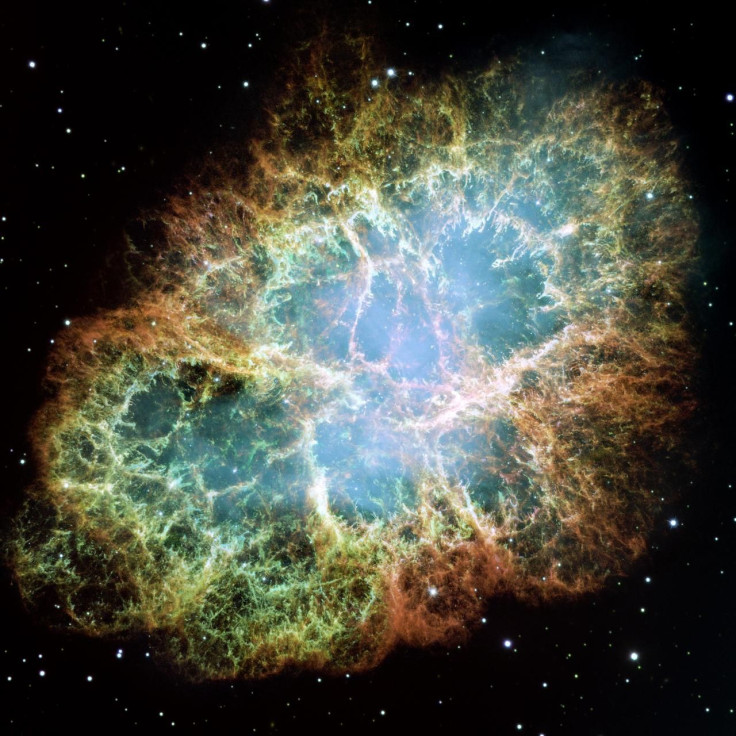Hubble, Chandra, Spitzer Join Forces To Create A New Image Of The Crab Nebula

KEY POINTS
- NASA's main space observatories created a new image of the Crab Nebula
- The new image features a combination of X-ray, infrared and visible wavelengths
- Each wavelength shows a different region within the nebula
The Great Observatories of NASA recently joined forces to create a new stunning visualization of the Crab Nebula. Through the imaging capabilities of the Hubble Space Telescope, Chandra X-ray Observatory and the Spitzer Space Telescope, NASA was able to share a multi-wavelength image of the nebula and its central supernova remnant.
The Crab Nebula is located within the Taurus constellation and sits about 6,500 light-years from Earth. It was formed after one of the stars in a binary system exploded and caused a supernova event.
Recently, NASA released a new visual representation of the nebula. According to the agency, the image was created by combining the visible, X-ray and infrared imaging capabilities of Hubble, Chandra and Spitzer. This resulted in a three-dimensional image of the massive cosmic object.
“Seeing two-dimensional images of an object, especially of a complex structure like the Crab Nebula, doesn't give you a good idea of its three-dimensional nature,” Frank Summers, the visualization scientist for the Space Telescope Science Institute said in a statement.
“With this scientific interpretation, we want to help people understand the Crab Nebula's nested and interconnected geometry,” he added.
In creating the image, NASA began with an X-ray structure of the pulsar at the nebula’s central region. As the heart of the nebula, the pulsar shows the bright remnant of the binary star system that went supernova. Around the pulsar is a ring of energized material that’s firing off jets of particles into the outer regions of the nebula.
Surrounding the nebula’s bright pulsar is a massive cloud that’s glowing with radiation. Composed mainly of gas and dust, this cloud expanded following the explosion from the central binary star system.
Enveloping the entire cosmic structure is the nebula’s outer shell, which was spotted by NASA through visible light. This shell is mainly composed of tentacle-shaped filaments made of ionized gas and appears like a massive cage that confines the nebula.
“The three-dimensional views of each nested structure give you an idea of its true dimensions," Summers explained. "To enable viewers to develop a complete mental model, we wanted to show each structure separately, from the ringed disk and jets in stark relief, to the synchrotron radiation as a cloud around that, and then the visible light as a cage structure surrounding the entire system.”
© Copyright IBTimes 2025. All rights reserved.





















